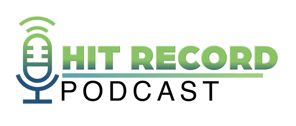Episode 28 - 3 Key Building Blocks You Need for Any Successful Marketing Campaign


Don't Miss An Episode, Subscribe Now

Podcast Episode 28: When designing a marketing campaign that is going to deliver for a bank or credit union you want to implement consistency, content, and testing.
- You want to be consistent in terms of what you're saying, how you're saying it and where you're saying it.
- Create content that goes along with your marketing campaign to help people through their buying process and buying journey.
- Test concepts, even from one campaign to another. If you find that one thing is working, you can implement that somewhere else.
Transcription:
Have you ever been talking about something that's really useful and thought that's a great idea? Let's hit record so we can share this with everyone. If you're looking for best practices for your bank or credit union, join us while we talk all things, sales, marketing, and strategy for financial institutions. Let's make it happen with FI GROW Solutions.
Meredith Olmstead:
Hi there, I'm Meredith Olmstead, CEO and Founder of Fi-Grow Solutions. We are a digital sales and marketing agency, and we work exclusively with financial institutions. And I am here with our Director of Client Success, Nida Ajaz. Say "Hi," Nida.
Nida Ajaz:
Hi everyone.
Meredith Olmstead:
So we were just having a pretty interesting kind of thorough conversation about what drives successful marketing campaigns. And we came up with kind of three things that we were talking about. And then I was like, let's hit record. Let's talk about these things that are really important when we're talking about how to design a marketing campaign that is going to deliver for a bank or credit union.
Meredith Olmstead:
So the three things we were talking about were consistency, content, and testing. So really making sure that whatever you're doing, it makes sense from one channel to another. And that you're consistent in terms of what you're saying, and consistent with how you're saying it and where you're saying it. So there's kind of a lot of different pieces of consistency there, but that also you're creating content that goes along with that marketing campaign to help people through their buying process and their buying journey. And that you're testing concepts, even from one campaign to another. So that if you find that one thing is working, you can implement that somewhere else. Or if you find that maybe one subject line has worked really well, you can implement that again. That kind of testing.
Meredith Olmstead:
So the first thing I think we maybe wanted to touch on, Nida, was testing. So tell me a little bit about what you've seen with clients and how testing something can help with driving success with a marketing campaign.
Nida Ajaz:
Yeah. So a lot of times as an organization, when you're putting promotions together, it's coming up with an idea of maybe this would resonate with a customer or not. So that's where we were coming up with the concept of maybe testing even promotions, not just consistently repeating that same ad line and just expecting different results, but testing them out.
Nida Ajaz:
So we were talking about the recent example. One of our clients had been running ads consistently online, advertising a low loan rate. But recently we had tested a no payment for 90 days option and it actually performed way better across all the paid ads.
Meredith Olmstead:
Oh, interesting.
Nida Ajaz:
Yeah. So it helped actually trigger a whole change in the language, even when they're using it within other platforms or other channels in their marketing and using that same language. Where they moved away from advertising a certain low rate and competing against a very common rate, but going more into the no payments or by now pay later kind of trend that's going on right now.
Meredith Olmstead:
Oh, that's cool.
Nida Ajaz:
So that was one of them, yeah.
Meredith Olmstead:
Yeah. So actually taking something they learned from their paid ad language and then implementing a larger marketing campaign around that language. That's pretty cool.
Meredith Olmstead:
I know the other thing we were talking about was creating consistent and attractive collateral basically, to go along with your marketing campaigns. And then making sure that you're matching the language and the look and feel of your campaign across channels.
Meredith Olmstead:
So we do a ton for our clients in the digital space, but they also need to be consistent in other areas because you are going to have people who are still driving through drive-ins and walking into branches. So making sure that if you have in branch collateral or materials, that language and that look and feel matches with all of your other digital and print media that goes along with that campaign. So that you really are consistent with your messaging, and the other thing that we didn't touch on yet, is that marketing campaigns, sometimes you'll have smaller institutions that want to change their promotions monthly. And you can't do that. It's not a realistic goal, right?
Meredith Olmstead:
If you're going to be consistent and implement your collateral across channels and in all these branches and on your digital assets, you need to have your campaigns that are running for two to three months, basically. So making sure that you allow your staff and your teams to implement all of these things effectively and give them a realistic timeframe to do that in, is important.
Nida Ajaz:
Yeah, for sure. The timeline is a very great point. And also going on as we focus on digital mainly, I think one of the things that I read on subjectline.com. When you use the same imagery, we're talking about the same image on email, and it drives you to a landing page from a promotion, using the exact same image. It actually drives conversion rate by 20 to 30%, which is interesting psychologically, right?
Nida Ajaz:
You're creating this memorable impact on your consumers, but it actually yields higher conversions. So I thought it was a really interesting stat.
Meredith Olmstead:
Yeah, that would be interesting to test for sure. And also, I know the other thing that we sometimes try to encourage clients to do, is reinforce any promotional language that you have in the online banking space. Because that is a real captive audience that you have of your members or your customers, who are coming in to log in. A lot of times, if they're on their desktop, they're going to be coming into your website. They're going to probably completely tune out your website, go straight to online banking, do their banking, and then sign out.
Meredith Olmstead:
And if there's a way for you to either put a banner ad in the online banking experience, so that they can actually read some of the language from your campaign while they're in their online banking, that's great. Or even send a message. But the other thing is, if you have a sign out opportunity, to redirect somebody. So if somebody signs out from online banking, instead of just taking them to a generic thank you page or back to the homepage, why not land them on your marketing promotion landing page? Or some other page that says, "Hey, did you consider this? Or have you thought about that?"
Nida Ajaz:
Yeah. That's a great point. It goes back to the consistency, right? Like you're constantly showing that message at least eight times before they actually make an action. So I think that definitely makes sense.
Nida Ajaz:
But at the same time also, I would say social media pages and things like that. So a lot of times you're creating very organic content, but sharing your promotional material and running paid ads and pay per click ads to reinforce that promotion is definitely a great idea as well. To have that sponsored content show up, have those paid ads kind of run towards your current list. So all those are very impacting ways for a successful marketing campaign.
Meredith Olmstead:
Yeah. And we've also seen too, with a marketing message that comes along with a campaign, say a HELOC campaign, adding a fun component. Like a contest or some other way to get in front of people, try to maybe drive them to some of your promotional materials, but then also capture some leads of people that might be interested in renovating their home, say for example. So they might be interested in a home equity line of credit. They might be a great opportunity for you to kick off some sales nurture, or send them on to your lending team for follow up.
Nida Ajaz:
Yeah. That's a great way to collect leads in a different way with the content. But then also we were talking about, another component was developing content. So a lot of times all of these organizations are developing promotional material, but really you also want to be the financial expert in those product lines.
Nida Ajaz:
So having a content campaign alongside your promotional campaign is a very good idea because they work kind of hand in hand, and they play out really well. So we've seen on landing pages, when we've incorporated a product sign up, but if they're not ready to sign up for a product, having a secondary lead capture to download informational topic related to the best way to buy an auto or a home buying checklist, and things like that. Where people are not ready to apply yet, but they would want to learn more. And we still want to capture that lead. A secondary lead capture is a very good idea and developing content that can go into emails alongside your promotional emails.
Meredith Olmstead:
Yeah. Awesome. All right, so great tips here. Thank you so much Nida for spending a few minutes and talking about this with me.
Nida Ajaz:
Yeah, this was fun.
Meredith Olmstead:
If you guys are interested in learning more about what we do Fi-Grow, please visit us at Figrow.com. We have some really great podcasts and blogs there, just about all different areas of marketing and sales for financial institutions. As well as our Fi-Growth Academy, which has some really well priced short digital training opportunities.
Meredith Olmstead:
So feel free to visit us. We'd love to hear from you, and otherwise let's just all get out there and make it happen.








Blog comments